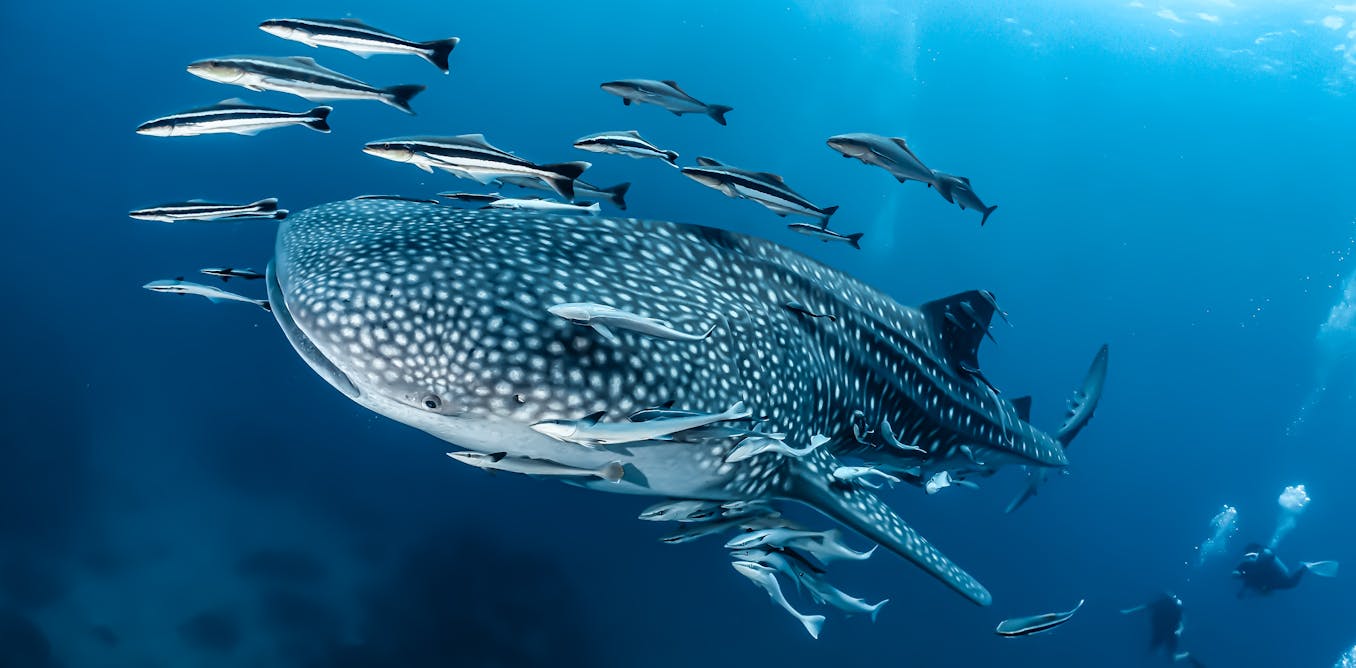Now Reading: We tracked 13,000 giants of the ocean over 30 years, to uncover their hidden highways
-
01
We tracked 13,000 giants of the ocean over 30 years, to uncover their hidden highways
We tracked 13,000 giants of the ocean over 30 years, to uncover their hidden highways

The vast majority of big marine animals remain unseen as they carry out their daily activities in the ocean. These marine megafauna, including whales, sharks, seals, turtles, and birds, travel long distances for feeding and breeding purposes. However, nearly one-third of them are facing the threat of extinction mainly due to fishing, pollution, shipping, and climate change.
Protecting these animals is challenging because their whereabouts are often unknown. To address this issue, a recent study led by researchers aimed to shed light on the matter. The team collected satellite tracking data spanning three decades to identify hotspots of megafauna activity worldwide. By monitoring 12,794 animals from 111 species, they discovered underwater “highways” where these animals traverse the global ocean, as well as areas where they frequent for feeding and breeding. Armed with this information, conservation efforts can be better directed towards safeguarding these critical habitats.
Over the past 30 years, marine biologists have equipped large oceanic animals with electronic tracking devices to monitor their movements via satellite. This collaborative effort involved 378 scientists from 50 countries, resulting in the creation of the largest tracking dataset for marine megafauna. The tracked species range from birds to whales, fishes (predominantly sharks), penguins, polar bears, seals, dugongs, manatees, and turtles, observed across oceans worldwide from 1985 to 2018.
Analysis of the data revealed that certain oceanic regions were more frequently traversed by the tagged animals, such as the central Indian Ocean, northeast Pacific Ocean, Atlantic north, and waters around Mozambique and South Africa. These areas, identified as the most ecologically and biologically significant regions for the tracked animals, are largely unprotected, with only a small portion falling within existing marine protected areas.
While the High Seas Treaty and the Kunming-Montreal Global Biodiversity Framework aim to enhance marine conservation efforts, a significant portion of important marine megafauna habitats remains vulnerable to human activities like plastic pollution, shipping, global warming, and industrial fishing. Emphasizing the need to expand protected areas and mitigate threats from various sources, the study underscores the urgency of safeguarding marine megafauna to prevent their decline.






